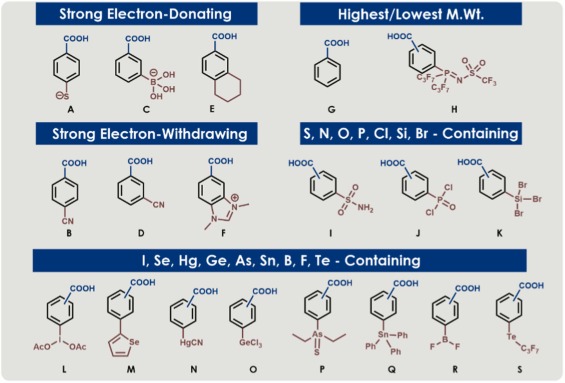
Title: Quantum Chemistry Reveals Innovative Framework to Anticipate Substituent Effects in Aromatic Systems
A groundbreaking method for assessing the impact of substituents on aromatic systems has been developed in Spain, offering a renewed insight into how electronic elements sway molecular reactivity. Researchers Pedro Salvador and Gerard Comas-Vilà from the University of Girona have established a framework that connects atomic orbital electron occupancy to classical substituent effects—inductive and resonance—in aromatic compounds. Their approach provides a more straightforward avenue for theoretically comprehending and predicting the extensively utilized, yet traditionally empirical, Hammett parameters.
A New Perspective on an Established Equation
Since its introduction in the 1930s, the Hammett equation has served as a fundamental element of physical organic chemistry. It measures how substituents on aromatic rings influence the relative rates or equilibria of chemical reactions. The central aspect of this method, the Hammett parameter (σ), indicates whether a substituent is electron-withdrawing or -donating. Nonetheless, despite its broad utilization, the theoretical foundations of Hammett parameters have remained difficult to decipher.
“This tool has played a crucial role in the evolution of organic chemistry,” remarks Ángel Martín Pendás, a theoretical chemist at the University of Oviedo, who did not participate in the study. “Yet, rationalizing them on a purely theoretical basis has proven rather challenging.”
The initiative by Salvador and Comas-Vilà seeks to tackle this challenge by employing quantum chemical calculations to formulate theoretical descriptors that align with Hammett parameters.
Effective Atomic Orbitals: A Novel Approach
The researchers grounded their investigation in the notion of effective atomic orbitals, concentrating on the distribution and occupation of electrons surrounding individual atoms within a molecule. “What we accomplished was to isolate, from the total density of the molecule, the portion associated with each atom, and subsequently formed orbitals from it,” Salvador explains. Although the shapes of these orbitals predominantly remain constant regardless of the substituent, their occupation numbers—the quantity of electron density—change with varying substituents.
From this examination, they derived two principal descriptors:
– I^X, signifying the inductive effect
– R^X, representing the resonance effect
These were directly derived from the quantum mechanical electron density of mono-substituted benzenes. The inductive component, demonstrated by alterations in the carbon-carbon bonding structure at the meta position, reflects the substituent’s ability to either donate or withdraw electrons through σ-bond mechanisms. Conversely, the resonance component is visible in the alteration of 2p_z orbital occupancy on ortho and para carbon atoms, illustrating the π-system’s delocalization characteristics.
Validating the Framework
To validate their framework, Salvador and Comas-Vilà applied the descriptors to a diverse array of meta- and para-substituted benzoic acid derivatives. Notably, the predicted Hammett parameters displayed remarkable concordance with experimental results. For meta-substituted systems, the mean average error was as low as 0.04—indicating exceptional predictive accuracy.
“The highlight for me was comparing our results with experimental data and discovering how well they aligned,” Comas-Vilà shares. “The correlation is outstanding.”
A Resource for the Future of Organic Chemistry
This innovative model holds substantial promise for the future of both theoretical and applied organic chemistry. Determining Hammett parameters experimentally can be time-consuming, necessitating synthesis along with kinetic or equilibrium studies across a range of conditions. The quantum-derived method from Salvador and Comas-Vilà offers a viable alternative, empowering chemists to computationally estimate these crucial values.
Moreover, this technique adeptly connects classical principles—developed long before the emergence of quantum chemistry—with contemporary computational perspectives. By concentrating on variations in electron density within specific atomic orbitals, the framework maintains the intuitive chemical insight of the Hammett approach while providing a robust theoretical foundation.
“This creates a beautiful link between electronic structure and empirical chemical reactivity,” states Martín Pendás. “Hammett parameters can be perceived through the change in electron counts found in each of these orbitals… I believe they correlate fantastically.”
As chemists increasingly depend on substituent effects to innovate better catalysts, intermediates, and pharmaceuticals, this new framework presents a powerful theoretical resource for promoting rational chemical design.
References:
1. Comas-Vilà, G., & Salvador, P. (2024). Connecting Effective Atomic Orbitals to Substituent Effects in Aromatic Systems. University of Girona, Spain.
2. For further insights on effective atomic orbital techniques, consult supporting computational methodologies in quantum chemistry literature.